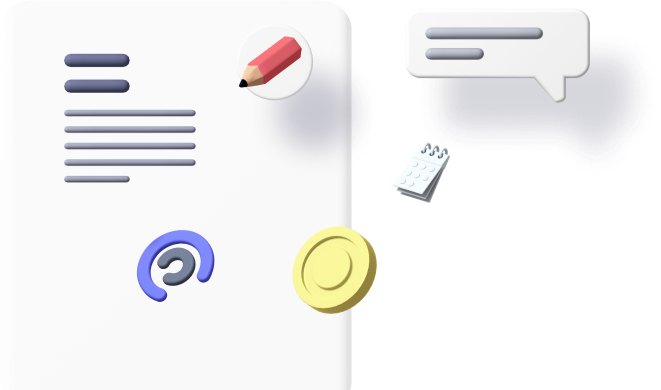Introduction
In the modern age of the Internet, Application Development is at the center of business expansion, innovation, and user experience enhancement. Be it developing a mobile app for users, a web app for your business, or a cloud application for worldwide users, the Application Development process lies at the forefront of technological innovations.
With the advent of artificial intelligence (AI), cloud computing, and cross-platform development, contemporary Application Development has become quicker, more efficient, and accessible to businesses of all sizes. This guide will discuss the major stages, technologies, and best practices of Application Development, as well as trends that are shaping the future.

What is Application Development?
Application Development is the process of developing, constructing, testing, and deploying software programs for mobile, web, or desktop environments. The process has several stages, such as requirement analysis, UI/UX designing, coding, testing, deployment, and maintenance.
Businesses spend money on Application Development to make operations more efficient, deliver superior customer service, and remain competitive in a fast-changing digital environment. From a mobile banking app, an e-commerce site, to an AI-powered chatbot, Application Development plays a key role in building solutions that improve user interaction and business performance.
Types of Applications:
Before beginning the Application Development process, businesses must decide on the type of application they need. The three most common categories are:
1.Native Applications
Native apps are built for a particular platform, i.e., Android or iOS. Native apps offer best performance, seamless user experience, and access to device features such as GPS, camera, and notifications. Platform-specific languages such as the following are utilized by developers:
Swift and Objective-C for iOS development
Java and Kotlin for Android application development
Though native apps have superior performance, they contain separate codebases for every platform, and thus longer time and greater cost for development.2.
2.Hybrid Applications
Hybrid apps have aspects of both web and native apps. They are developed with web technologies such as JavaScript, HTML, and CSS but enveloped in a native wrapper. They can run on different platforms with one codebase.
Some of the well-known hybrid Application Development frameworks are:
Flutter (Google)
React Native (by Facebook)
Ionic
Hybrid apps save development time and expense but are not always as efficient as native apps
3.Web Applications
Web applications run in web browsers and do not require installation. They are accessible from any device with an internet connection, making them highly versatile.
Common types of web apps include:
- Progressive Web Apps (PWAs) – Fast, responsive, and capable of working offline
- Single-Page Applications (SPAs) – Apps that load content dynamically without refreshing the page
Technologies used in web Application Development include React.js, Angular, and Vue.js for frontend development and Node.js, Python (Django), and PHP (Laravel) for backend development.
Key Stages of Application Developmen1.t
1.Planning and Research
Prior to Application Development, there needs to be an in-depth study and planning done. This entails:
Determining the target population and their concerns
Studying competitors to comprehend market patterns
Defining application features in terms of user needs
Preparing a comprehensive roadmap helps in having an easy Application Development process.
2.UI/UX Design
A good user interface (UI) and user experience (UX) are essential for the success of an app. UI/UX design emphasizes:
Developing wireframes and prototypes to get a visual representation of the app’s structure
Providing smooth navigation for an intuitive user experience
By leveraging current design aesthetics such as dark mode, animation, and micro-interaction
Software such as Figma, Adobe XD, and Sketch assist designers in creating aesthetically pleasing apps.
3.Development and Coding
After the design is complete, the Application Development process shifts to coding. Developers employ different programming languages, frameworks, and tools to develop the frontend and backend of the application.
Frontend Development
For mobile applications: Swift, Kotlin, Flutter, React Native
For web applications: HTML, CSS, JavaScript, React, Angular, Vue.js
Backend Development
Node.js (JavaScript-based backend)
Django (Python-based framework)
Laravel (PHP-based framework)
Spring Boot (Java-based backend)
The backend handles data management, authentication, and API integrations.
4.Testing and Debugging
Testing is an important process in Application Development to verify that the app is working as it should. Various testing methods are:
Unit Testing – Testing the individual parts of the application
Integration Testing – Creating smooth module-to-module interaction
Performance Testing – Verifying app speed, responsiveness, and load management
Security Testing – Discovering and correcting vulnerabilities
Test automation tools such as Selenium, Appium, and JUnit assist in accelerating the testing process.
5.Deployment and Launch
Once tested successfully, the application is ready to be deployed. Deployment techniques differ depending on the application type:
Mobile applications are released on the Google Play Store (for Android) and the Apple App Store (for iOS).
Web applications are deployed on cloud providers such as AWS, Google Cloud, or Microsoft Azure.
Latest Trends in Application Development
1. AI and Machine Learning Integration
AI-powered applications provide personalized experiences, chatbots, and predictive analytics. Examples include ChatGPT-powered chat assistants and voice recognition apps.
2. Cloud-Based Applications
Cloud computing enables scalable and flexible Application Development. Popular cloud platforms include AWS, Microsoft Azure, and Google Cloud.
3. Cross-Platform Development
Frameworks like Flutter and React Native allow developers to write code once and deploy it across multiple platforms, reducing development time and cost.
4. Blockchain for Security
Blockchain technology is increasingly used in Application Development for secure transactions, identity verification, and data integrity.
Conclusion
In the fast pace of today’s digital world, Application Development has become a must for companies desiring to be competitive. Irrespective of whether you’re developing a mobile, web, or enterprise app, a judiciously prepared Application Development procedure guarantees smooth function, improved usability, and continued success.
From selecting the appropriate development strategy to incorporating innovative technologies such as AI, cloud computing, and blockchain, the future of Application Development is replete with possibilities. But success is contingent upon meticulous planning, effective execution, and ongoing improvement.
At Jaz Infotech, we excel in providing innovative and scalable Application Development solutions that are specifically designed to meet your business requirements. Be it a startup or a large enterprise, our experts are here to bring your app idea to life



